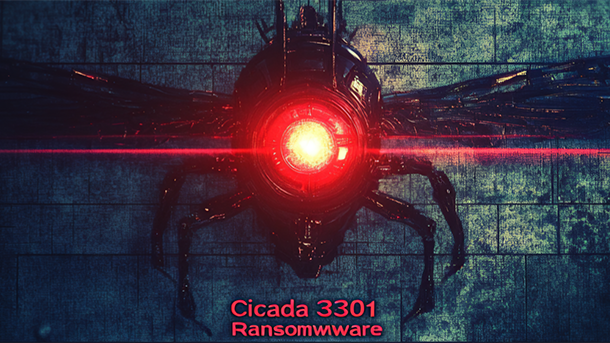Rust-Based Cicada3301 Targets Virtual Machines and Critical Systems

Threat Group: Cicada3301 Ransomware Operators
Threat Type: Ransomware-as-a-Service (RaaS)
Exploited Vulnerabilities: Poorly secured VMware ESXi systems, Weak Passwords, Brute-forcing via Brutus botnet
Malware Used: Cicada3301 Ransomware
Threat Score: High (8.5/10) — Due to its focus on critical infrastructure (VMware ESXi), advanced encryption techniques, and cross-platform targeting capabilities.
Overview
Cicada3301 is a new ransomware-as-a-service (RaaS) operation that has quickly risen in prominence since mid-2024. Named after the mysterious Cicada 3301 cryptographic puzzle, this ransomware targets both Windows and Linux systems, with a specific focus on VMware ESXi environments. It shares notable similarities with the infamous ALPHV/BlackCat ransomware group, particularly in its encryption mechanisms and use of Rust for cross-platform capabilities.
Key Details
- First Detected: June 2024
- Primary Targets: Small to medium-sized businesses (SMBs) and VMware ESXi systems, focusing on industries like healthcare, manufacturing, and retail.
- Ransom Payment: Accepted in Bitcoin and Monero.
- Encryption Algorithm: ChaCha20, used in combination with AES, with intermittent encryption for large files.
- Languages: Written in Rust, targeting cross-platform environments.
Attack Vectors
Cicada3301 typically gains initial access through vulnerabilities or brute-forced credentials. Attackers may use the Brutus botnet to obtain access, particularly exploiting poorly secured ScreenConnect instances. Following infiltration, the ransomware can:
- Stop critical services, including those tied to virtual machines, via commands like
IISReset.exeand commands for halting VMs. - Delete snapshots and shadow copies, complicating recovery.
- Disable system recovery by tampering with configurations using tools like
bcdedit. - Wipe event logs to prevent detection and response.
Known Indicators of Compromise (IoCs)
- File Extensions Targeted:
.sql,.doc,.jpg,.pdf,.xlsx, and more. - Command Usage:
IISReset.exeto stop IIS services.wevtutilto clear event logs.vssadmin delete shadowsto remove system restore points.
- Encryption Behavior: Intermittent encryption of large files over 100 MB, and aggressive targeting of virtualized environments by stopping and encrypting running virtual machines.
Mitigation and Prevention
- Regularly update VMware ESXi and other critical infrastructure to patch vulnerabilities commonly exploited by this ransomware.
- Use multi-factor authentication (MFA) to protect administrative and remote access tools like ScreenConnect from brute force attacks.
- Implement robust backup and recovery processes, ensuring backups are stored offline or in immutable storage.
- Deploy advanced anti-ransomware tools that can prevent ransomware at early stages, such as Morphisec’s Moving Target Defense technology, which can mitigate infiltration attempts.
Conclusion
Cicada3301 represents a significant new threat in the ransomware landscape, with its roots potentially linked to the notorious ALPHV/BlackCat group. Its cross-platform capabilities and focus on VMware ESXi environments make it a potent adversary for organizations relying heavily on virtualized infrastructures. The use of advanced encryption techniques, combined with opportunistic attack vectors such as brute-forcing credentials, makes it crucial for organizations to stay vigilant and adopt proactive security measures. Businesses, especially in targeted industries, should prioritize patching vulnerabilities, implementing strong authentication mechanisms, and investing in advanced endpoint protection solutions to mitigate the risk posed by this emerging ransomware group.
Sources
- Morphisec Threat Research - Decoding the Puzzle: Cicada3301 Ransomware Threat Analysis
- The Hacker News - New Rust-Based Ransomware Cicada3301 Targets Windows and Linux Systems
- TechRepublic - VMware ESXi Servers Targeted by New Ransomware Variant


